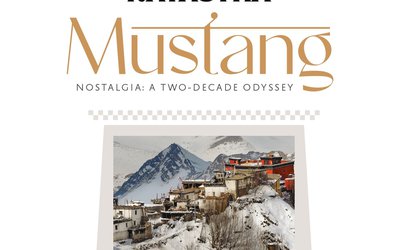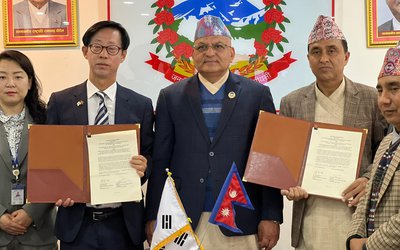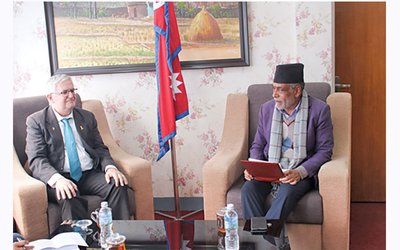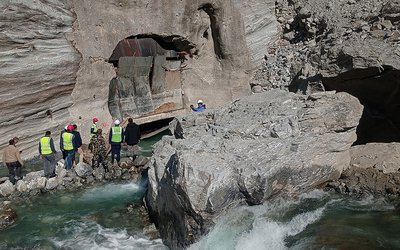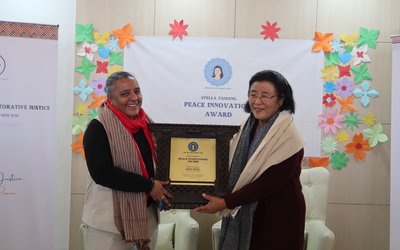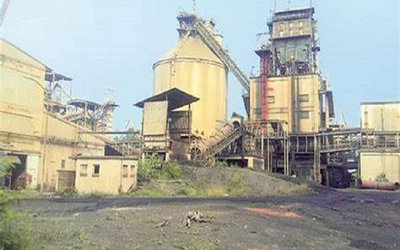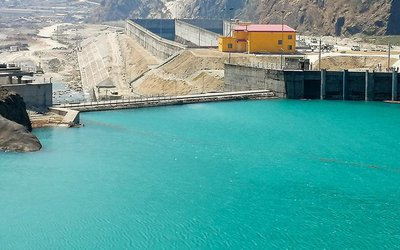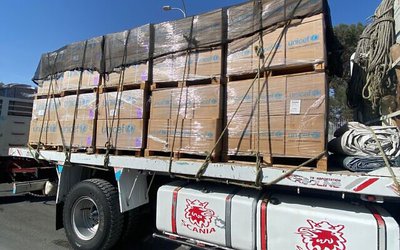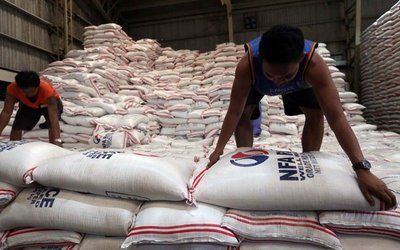
For Secretary of Energy, Water Resources and Irrigation Dinesh Kumar Ghimire, another feather was added to his cap. Lingering for over two and half decades on various contentious issues of interpretation of Mahakali Integrated Treaty during implementation, his team was able to make a breakthrough in the talks.
During recent meeting held in New Delhi, Nepal and India agreed on key points of Mahakali Treaty.
Given the nature of the treaty and its state, there are still many contentious issues of the treaty which was ratified by Nepal’s Parliament in 1996 by two thirds of majority.
The agreement was finalized through bilateral talks held in New Delhi under the leadership of Dinesh Kumar Ghimire, secretary of the Ministry of Energy, Water Resources and Irrigation, from Nepal and UP Singh, secretary of the Department of Water Resources, River Development and Ganga Rejuvenation, from India.
As the issue of implementation of Pancheshwor Project had been emphasized during the recent Nepal visit by Indian Foreign Secretary Harsh Vardhan Shringla, the agreement is seen as a breakthrough.
According to secretary of Ministry of Energy,Water Resources and Irrigation Dinesh Kumar Ghimire, both the countries reached an agreement on articles 3, 4 and 7 of the treaty. Article 3 discusses the cost-sharing of the Pancheshwor Multipurpose Project, Article 4 deals with the construction of the Dodhara and Chandani irrigation tunnel and Article 7 includes the provision of releasing water upstream.
Secretary Ghimie said that the Indian side was previously insistent on constructing irrigation canals in Chandani and Dodhara, which are Nepali territories on the other side of the Mahakali River, only after the completion of the Pancheshwor Project. However, it has now softened that stance. According to Ghimire, both sides have agreed to begin construction of the canals.
“Our focus should be to respect the needs and wishes of the people as it will help facilitate the overall implementation of the project. That is why we proposed building the canals,” Ghimire said. “The Indian side took this positively.”
Nepal had already prepared a Detailed Project Report (DPR) for the irrigation canals in Dodhara and Chandani and submitted it to India. But no concrete progress had been made. But now, the Indian technical side has agreed to study and comment on the DPR and complete all the related works within two months. A 1.1-kilometre portion of the canal will have to be built on the Indian land.
The two countries have also agreed to share the costs of the Pancheshwor Project on the basis of the benefits each side will receive. The Mahakali Treaty was signed between Nepal and India in 1996 and one of its provisions was to build Pancheshwor as a bilateral multipurpose project aimed at generating a large amount of hydroelectricity, provide irrigation facilities and control the river.
Article 3 of the treaty mentions sharing the costs based on the benefits. Nepal has been stating that since it will only receive 50 per cent of the generated hydropower and will not get any advantage from the irrigation and river control aspects of the project, it will only bear the costs of the hydropower. Secretary Ghimire reiterated the same view in the latest meeting.
The Indian side has been claiming that 93,000 hectares of land in Nepal will be irrigated by the project and that Nepal will also be helped by the 18-kilometre embankment that will be constructed.
It asserts that Nepal will gain a benefit of 22 per cent. However, Nepal has been saying that it will not share the costs for these aspects because it is making alternative arrangements for the irrigation and has already constructed an eight-kilometre embankment on its own. “The Indians acknowledged our facts and have expressed their commitment that an expert group will study and conclude these matters as soon as possible,” Ghimire said.
The issue of the Lower Sarada Dam was also discussed in the meeting. India has been using all the water from the Sarada Barrage since it was built in 1920. Nepal has been asking for a share of that water. The two sides agreed to discuss further on the issue.
The meeting also looked at the issue of water consumption in the coastal area above Pancheshwor Dam. The norm is to release five per cent water to the area but it appears that only one per cent may also be enough for consumption. So, the two sides have agreed to release one per cent of the water, or two per cent when needed, and utilize the rest for the project itself.
- FM DR.RANA INDIA VISIT: Strengthening Relations
- Jan 02, 2025
- BUTWAL-HETAUDA Connected By 220 kV
- Jan 02, 2025
- PM OLI' CHINA VISIT: A Success For Business
- Jan 01, 2025
- ISRAELI AMBASSADOR SPEAKS: Israel For All Possible Support To Nepal
- Jan 01, 2025
- NEPAL-INDIA ENERGY TRDE: A Silver Lining For Nepal
- Dec 31, 2024
